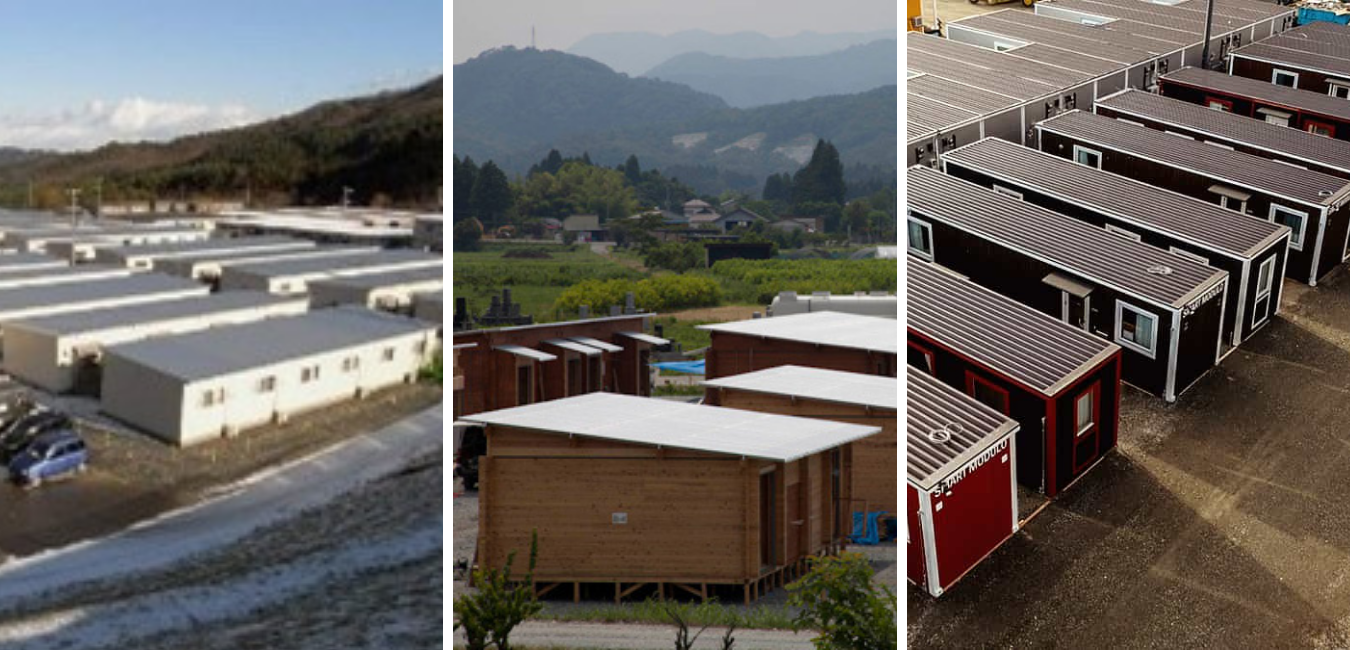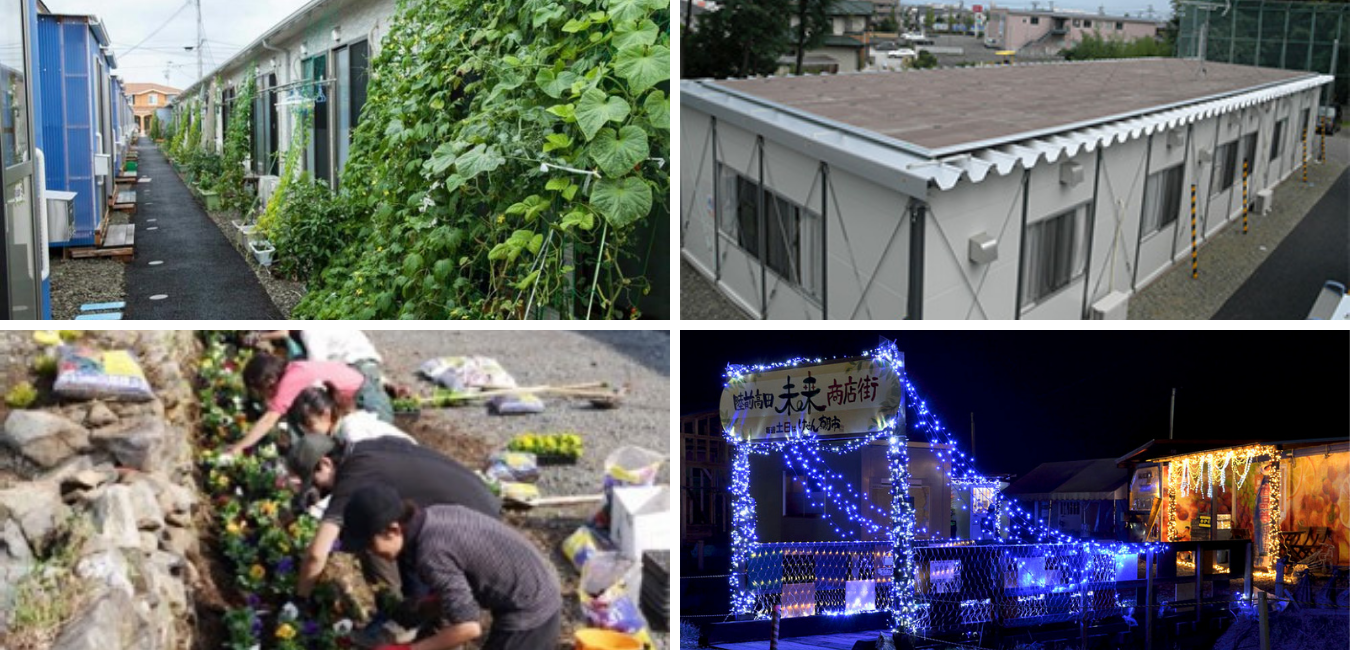Transitional Housing: A Japanese Perspective
In this second iteration of our series on the concept of Transitional Housing, Kiyohito Tamotsu shares an insightful piece on the topic from a Japanese perspective.
If you've missed the first, check out our article on Transitional Housing in Hong Kong here.
To start, why is there a need for transitional housing in Japan?
We need transitional housing during the recovery periods from natural disasters. More than 110,000 people lived in the houses within the Tohoku region after the Tohoku earthquake and tsunami of 2011. Thousands of people are still living there 10 years after the disaster, and the demands for temporary housing continue to increase because of the unpredictable natural disasters in Japan.

Tell us about the development of transitional housing in your hometown
Prefabricated architectures: shops, offices, and warehouses are common in any place in the cities, however, the architecture in terms of houses is still not common for ordinal uses. On the other hand, the development of transitional housing has boomed in reaction to the growing demand because of the disasters. Prefabricated houses used to be uncomfortable, but the recent structures and specifications of materials have upgraded for insulation. Interior and landscape designs are also taken into the consideration for long-stay uses.
How does transitional housing tackle the challenge of climate change and other social problems?
In cases of emergencies, transitional housing is worth it because of the easy-up installation and cost benefits. Regarding urban heat islands and climate change, the insulation and comfort of the housing should be improved. From an environmental psychology perspective, studies have found that individuals' surrounding landscape directly affects their mental health. After 10 years of experience from the Tohoku disasters, the development of transitional housing will be utilized for ordinal purpose uses, especially, indoor, outdoor comfort, and mental health living.
Are there any landscape interventions or mitigation measures applied in some of the transitional housing schemes?
Community gardens are effective for local communication in temporary housing areas where the population is aging. Also, the greening of the area leads to landscape improvement for everyday living1. For security reasons and aesthetics to temporary housing, a lot of lighting projects are launched for the area.

Credits (bottom two, from left to right): Community garden to users of temporary housing in Takoyaki, Kamakshi 2015, Temporary houses lighting in Rikuzen-Takata 2011
Are most of the transitional housing development subsidised by the local government or by NGOs? Did the community find a chance to recover through these programmes?
The Japanese government bears the cost for the transitional housing located in the area suffered by catastrophic disasters. When the disasters hit the area, the local government will take care of those who suffered from it in the area; therefore, the people will find where they will live. However, there are some evaluation difficulties among the damaged levels to existing housing. Most people are fond of living where they used to live, so the temporary housing is just a short-stay place for them. The people’s feelings for their hometown will not be satisfied, for some people are forced to relocate after the transition living.
Are there any ideas for incorporating landscape architecture designs into the existing concept of transitional housing? For instance, the temporary housing of the 311 Tohoku earthquake and tsunami?
There are some stages for involving landscape to the transitional living places. First of all, we need to think about housing as people’s houses, not shelters. The housing should be housing in which they used to live, the indoor and outdoor spaces are also their spaces. The area should have open spaces, green, flowers, some shops like their hometown landscape.
Secondly, the community’s mutual interests for living and activities should be founded by a third party. Most people stay alone, and different people live with different mental health states/conditions as some people might have lost their families and friends. Greening, flowering, and making their common facilities; such as community garden, tables, benches, open spaces, lighting, libraries, and other landscape elements by their hands are good activities such as Matsuri (Local Festival) for all and the activities are opportunities to go outside.
Third, the contribution to others is another motivation to go out to the community. Building playgrounds and encouraging activities for children are fundamental for the area’s management and mental health. Children’s stress is usually ignored because adults tend to think that they are selfish. The hidden impact of living in transitional housing in a disaster situation is children’s stress which is more than adult’s ones.
Building stages, sandpits, playsets, and open spaces for children sends a great message to children from adults and helps to create hope for the communities.
References
1. Children’s Play Environment after a Disaster: The Great East Japan Earthquake, Isami Kinoshita and Helen Woolley, Academic Editors: Ute Navidi and Sari Acra, Children 2015, 2(1), 39-62; https://doi.org/10.3390/children2010039, https://www.mdpi.com/2227-9067/2/1/39/htm
2. Non-profit Organization Kodomo-Wakamono-Machiing, HOSHINO. Satoshi https://diamond.jp/articles/-/168454?page=5
3. The Present Situation of Everyday Life for Children in Child-care Facilities in Fukushima, Kenta Shinozawa, Mariko Sadayuki, Kiyohito Tamotsu, Misaki Fujii

